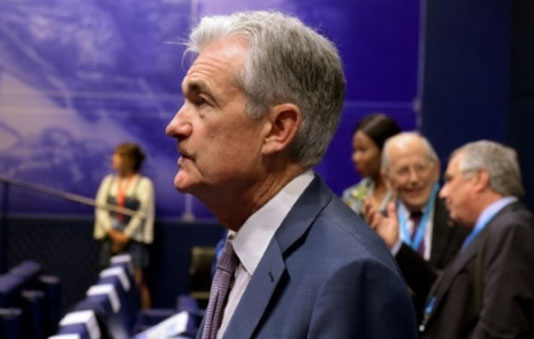WASHINGTON, July 28, 2019 (BSS/AFP) – For the first time since the Great
Recession a decade ago, the US Federal Reserve is poised to cut interest
rates, shoring up America’s defenses as the global economy weakens.
It will mark a striking about-face for the central bank, reversing a rate
increase announced just seven months ago.
And the policy flip comes as the central bank has suffered a number of
awkward stumbles in communications, as it has tried to communicate confidence
in the economy, while at the same time a readiness to support continued
expansion.
Fed officials have had to backtrack and clarify recent statements, and
amid President Donald Trump’s blistering, year-long public campaign against
Fed Chair Jerome Powell, one central banker seemed to offer himself as an
alternative for the leadership position.
Meanwhile, although the rate cut this week is almost universally expected,
economists disagree on whether the Fed is making the right move. Indeed,
cutting rates now could appear highly unusual: the Fed has never done so with
unemployment so low.
New York Fed President John Williams, the influential vice chair of the
Fed’s monetary policy committee, said this month that acting quickly to cut
the key lending rate could “vaccinate” an economy against “disease” later on.
But his office later scrambled to clarify that the comment was referring
to the history of monetary policy and was not a prediction of how the Fed
would act on July 31.
Trump pounced almost immediately: “I like New York Fed President John
Williams’ first statement much better than his second.”
Diane Swonk, chief economist at Grant Thornton, said the Fed’s
communication blunders did not help it withstand Trump’s onslaught and his
demand for lower borrowing rates.
“The president might have been right for the wrong reasons because he was
destroying the economy himself,” she told AFP, saying the damage from the
trade battles with China and others has been underestimated.
So “even when they do the right thing it looks like they’re capitulating,”
she said, undermining their credibility.
Trump’s vocal and repeated attacks on the Fed are unprecedented. And Swonk
warned it could backfire.
“What the president’s doing now is undermining the most powerful tool the
Fed has when he’s going to need it most.”
– Mixed economic signals –
James Bullard, the dovish president of the St Louis Federal Reserve Bank,
who like Trump has advocated a rate cut, said recently that he would take the
job of Fed chair if offered.
In the context of reports that Trump has considered removing or demoting
Powell, Bullard’s comments do little to reinforce confidence in the Fed
chief.
Powell has repeatedly said the political considerations have no impact on
the Fed’s policy committee. But even the economic case is opaque.
There are signs the economy does not need central bank stimulus: consumer
spending is solid and job growth is steady, not to mention record stock
prices on Wall Street.
“For what it’s worth, we think any rate cut is a mistake,” economist Ian
Shepherdson said in a recent note to clients.
But others argue the Fed will be making up for the error it made in
December.
The Fed raised rates in December despite signs of a weakening global
economy and Trump’s multiple global trade conflicts.
But central bankers now cite those same reasons as a justification for
cutting rates.
“I do believe the Fed made a mistake and they know it,” Quincy Krosby,
chief market strategist at Prudential Financial, told AFP.
And there are a number of reasons to be worried.
GDP growth slowed this year. Manufacturing is in recession. The housing
market has stumbled. Business investment is flat-lining amid uncertainty
caused by the trade wars.
Powell told lawmakers this month that Trump’s trade wars with China and
Europe were a “shock” to American business confidence.
Meanwhile, Europe and China are faltering, eating into demand for US
exports and raising the prospect of contagion, while the possibility of a no-
deal Brexit, with its uncertain consequences, draws nearer every day.
Revised government data released Friday show that at the end of 2018
growth was only half as strong as previously reported — taking the wind out
of the economy’s sails at the start of this year.



